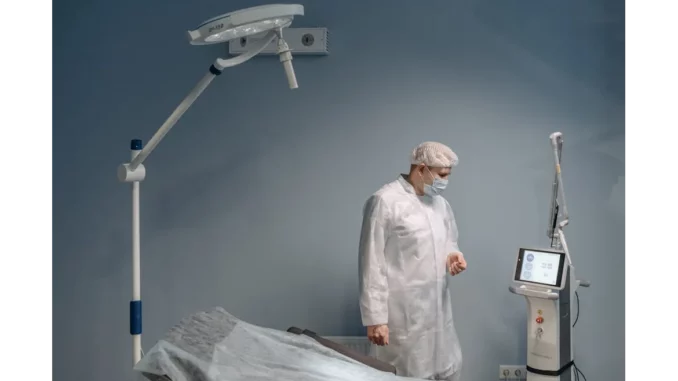
In a rapidly advancing technological landscape, robotics continually pushes the boundaries of what is possible. A recent development at Cornell University has set a new benchmark in micro-robotics with the creation of the smallest walking robot, measuring an extraordinary 2 to 5 microns. This innovation not only breaks records but also heralds a new era of possibilities in scientific exploration and medical research. During a recent discussion, Dr Lara Mitchell, an esteemed expert in micro-robotics, provided illuminating insights into the potential implications of this groundbreaking achievement.
Dr Mitchell conveyed her excitement about the significance of this diminutive robot, emphasising that it represents more than just a feat of engineering. “This development redefines the potential for microscopic imaging and interaction,” she remarked. By operating at such a minuscule scale, these robots can navigate intricate environments, such as biological tissues, with a precision previously unattainable. The ability to function autonomously, powered by interactions with visible light waves, is a testament to the sophisticated research efforts underway. “This isn’t simply miniaturisation,” Dr Mitchell explained, “it’s the fusion of advanced technologies to create something entirely novel and functional on a microscopic level.”
The mechanics underlying these micro-robots are nothing short of remarkable. Utilising a technique known as magnetic control, they can traverse solid surfaces and swim through liquids. This is made possible by the incorporation of nanometre-scale magnets that vary in shape and size, enabling precise control over the robot’s movements. “Consider them as lenses that delve deeper into the molecular world,” noted Dr Mitchell, drawing an analogy to the unprecedented capabilities this technology affords, akin to granting a microscope the ability to explore previously inaccessible realms.
Among the most striking advancements is the robots’ diminutive size, ranging from 2 to 5 microns, a significant reduction from previous iterations that measured 40 to 70 microns. This size reduction has been achieved without sacrificing functionality, thanks to the innovative design and engineering efforts at Cornell. The robots’ autonomy, facilitated by their interaction with light and magnetic fields, opens new avenues for research and exploration. “Imagine a robot traversing a biological sample, delivering real-time data on cellular interactions,” Dr Mitchell mused, underscoring the potentially limitless applications.
As with any cutting-edge technology, the introduction of microscopic robots comes with both opportunities and challenges. Dr Mitchell highlighted the transformative potential of these devices in scientific research and medical diagnostics, enabling navigation through previously inaccessible environments. “They can manipulate and observe biological structures at a nanoscale, offering insights we previously lacked,” she noted. However, the technology remains in its experimental stages, necessitating further validation for clinical applications. Additionally, technical challenges in controlling and powering such tiny devices persist. “We’re at the frontier,” she acknowledged, “and with that comes a steep learning curve.”
The implications of this innovation extend well beyond the laboratory, ushering in new opportunities across various fields, from medicine to environmental monitoring. As Dr Mitchell elaborated, the trend towards miniaturisation in robotics is poised to revolutionise our understanding of biological processes. In medicine, these micro-robots could lead to breakthroughs in understanding cellular interactions and hold promise for targeted drug delivery. “Envision robots that deliver medication precisely at the cellular level,” she suggested, “minimising side effects and maximising efficacy.” In environmental science, they could observe microbial communities in situ, offering valuable insights into ecosystem health. “The possibilities are as vast as they are exciting,” she observed.
Looking to the future, Dr Mitchell anticipates a surge in the development of more sophisticated microscopic robots. “As research progresses, we’ll witness enhanced capabilities in imaging and manipulation at the cellular and molecular levels,” she predicted. The integration of optics and robotics is expected to unveil novel methodologies in both research and clinical settings. Cornell University’s work exemplifies the confluence of robotics and optics, paving the way for further innovations in nanotechnology. Dr Mitchell concluded our conversation on a hopeful note: “The future is bright, and this is just the beginning of what we can achieve with microscopic robotics.”


Be the first to comment